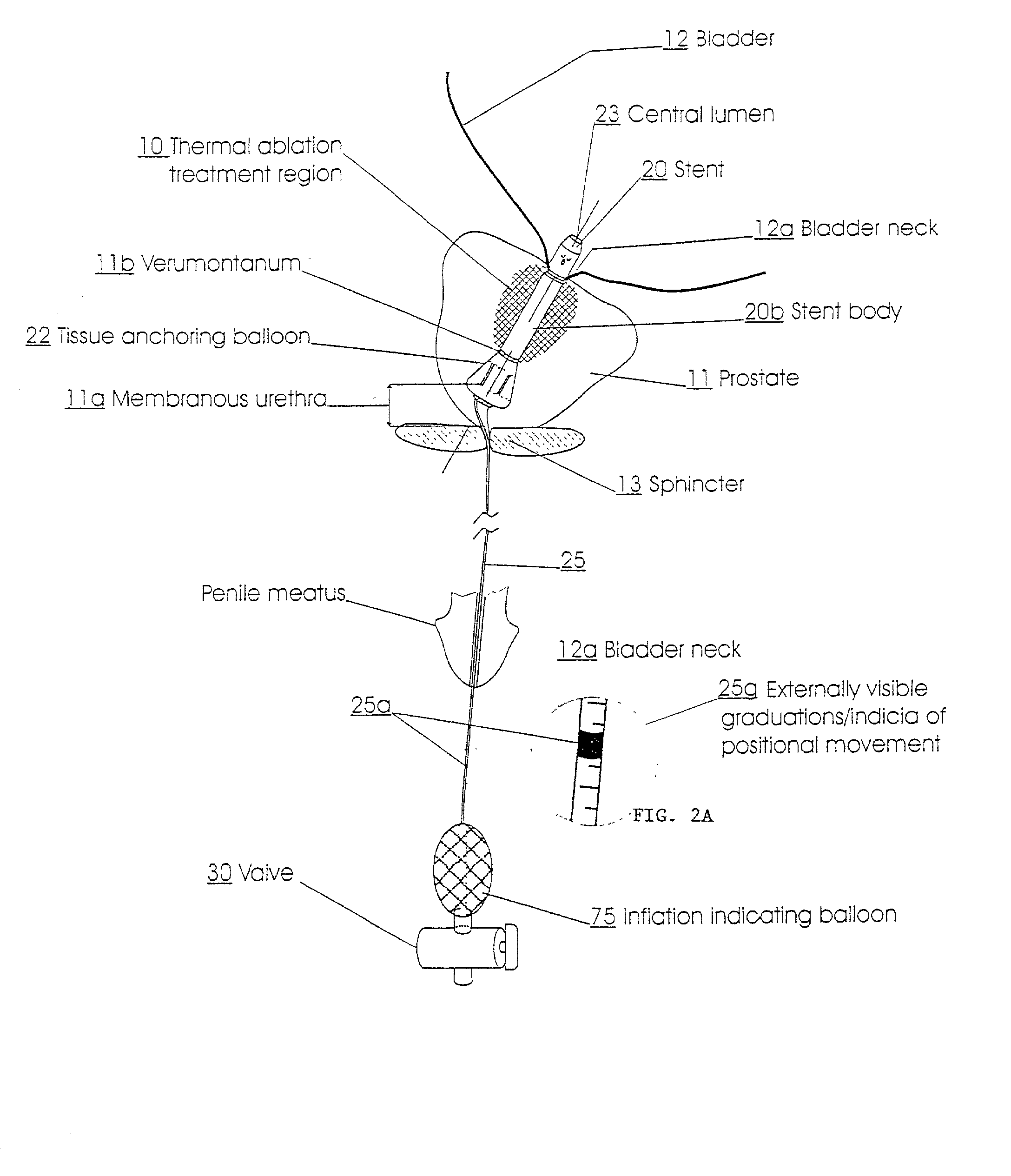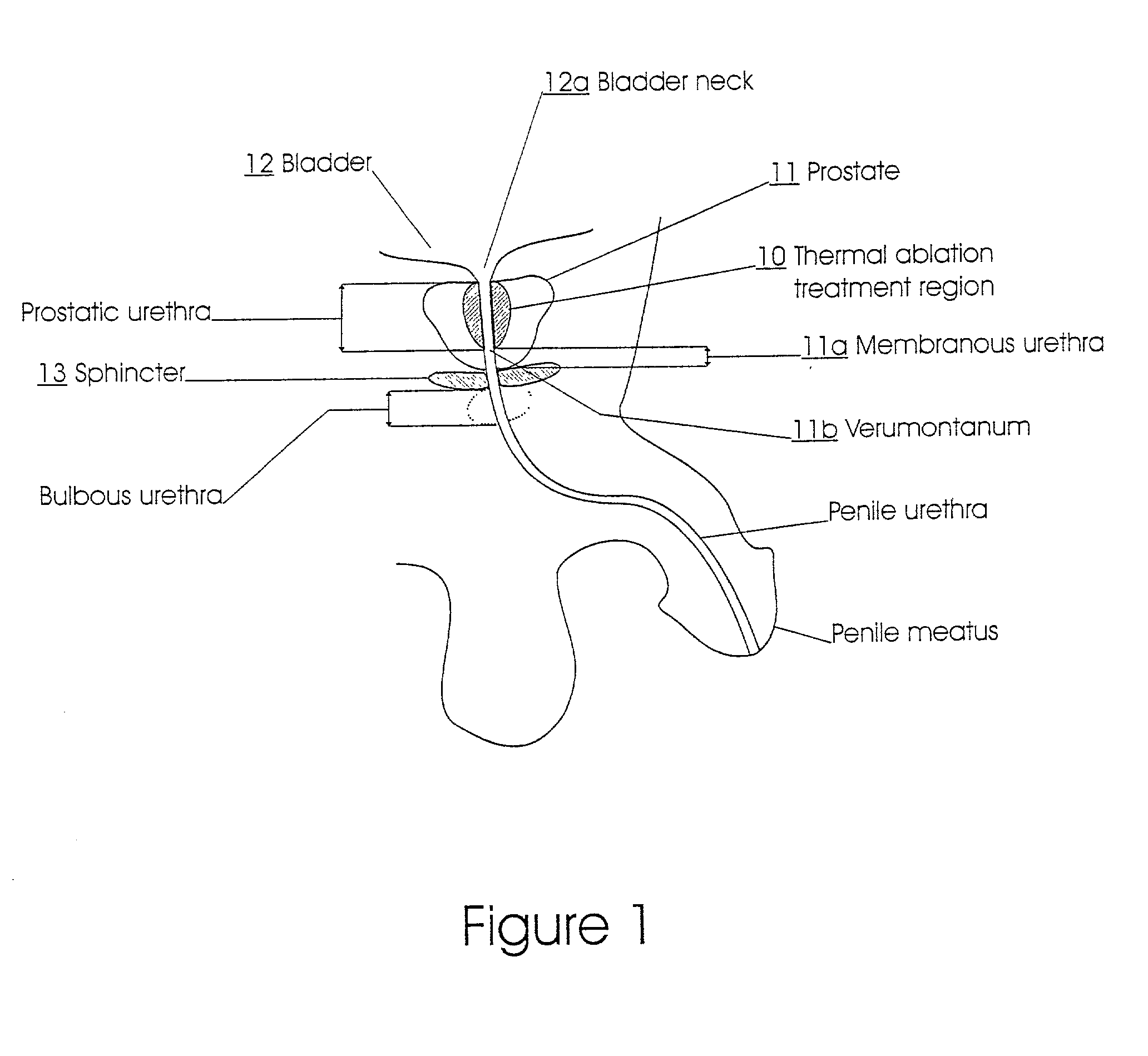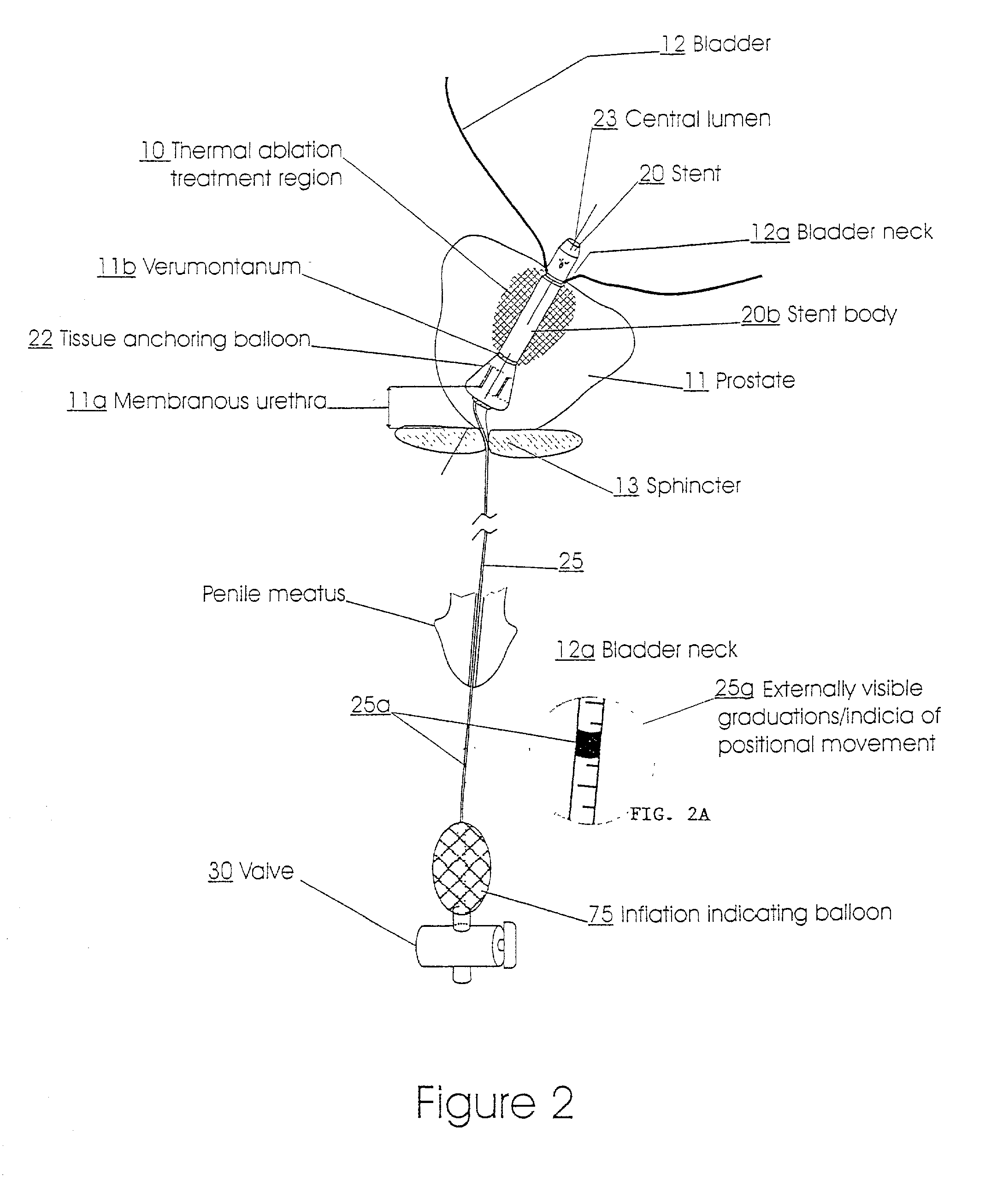Prostatic stent with localized tissue engaging anchoring means and methods for inhibiting obstruction of the prostatic urethra
a prostatic urethra and localized tissue technology, applied in the direction of prosthesis, contraceptive devices, catheters, etc., can solve the problems of increasing the risk of urinary tract infection, expanding or swelling of ablated tissue, and creating undesirable and unduly limited opening siz
- Summary
- Abstract
- Description
- Claims
- Application Information
AI Technical Summary
Benefits of technology
Problems solved by technology
Method used
Image
Examples
Embodiment Construction
[0067] The present invention now will be described more fully hereinafter with reference to the accompanying drawings, in which embodiments of the invention are shown. This invention may, however, be embodied in many different forms and should not be construed as limited to the embodiments set forth herein; rather, these embodiments are provided so that this disclosure will be thorough and complete, and will fully convey the scope of the invention to those skilled in the art. In the figures, certain elements or features may be exaggerated for clarity. Like numbers refer to like elements throughout.
[0068] Referring now to FIG. 1, the thermal ablation treatment region 10 is indicated by the lined region in the prostate 11. The term "thermal ablation" refers to exposing the targeted tissue to a temperature which is sufficient to kill the tissue. In certain embodiments, the thermal ablation is carried out by exposing the targeted tissue to thermocoagulation via a catheter inserted into ...
PUM
 Login to View More
Login to View More Abstract
Description
Claims
Application Information
 Login to View More
Login to View More - R&D
- Intellectual Property
- Life Sciences
- Materials
- Tech Scout
- Unparalleled Data Quality
- Higher Quality Content
- 60% Fewer Hallucinations
Browse by: Latest US Patents, China's latest patents, Technical Efficacy Thesaurus, Application Domain, Technology Topic, Popular Technical Reports.
© 2025 PatSnap. All rights reserved.Legal|Privacy policy|Modern Slavery Act Transparency Statement|Sitemap|About US| Contact US: help@patsnap.com



